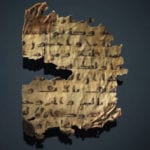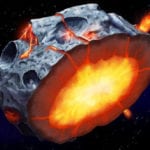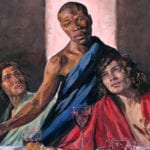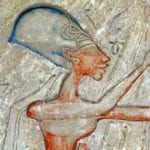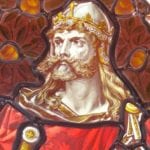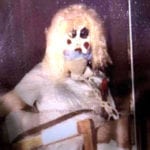 Technology
Technology  Technology
Technology  Humans
Humans 10 Everyday Human Behaviors That Are Actually Survival Instincts
 Animals
Animals 10 Animals That Humiliated and Harmed Historical Leaders
 History
History 10 Most Influential Protests in Modern History
 Creepy
Creepy 10 More Representations of Death from Myth, Legend, and Folktale
 Technology
Technology 10 Scientific Breakthroughs of 2025 That’ll Change Everything
 Our World
Our World 10 Ways Icelandic Culture Makes Other Countries Look Boring
 Misconceptions
Misconceptions 10 Common Misconceptions About the Victorian Era
 Mysteries
Mysteries 10 Strange Unexplained Mysteries of 2025
 Miscellaneous
Miscellaneous 10 of History’s Most Bell-Ringing Finishing Moves
 Technology
Technology Top 10 Everyday Tech Buzzwords That Hide a Darker Past
 Humans
Humans 10 Everyday Human Behaviors That Are Actually Survival Instincts
 Animals
Animals 10 Animals That Humiliated and Harmed Historical Leaders
Who's Behind Listverse?

Jamie Frater
Head Editor
Jamie founded Listverse due to an insatiable desire to share fascinating, obscure, and bizarre facts. He has been a guest speaker on numerous national radio and television stations and is a five time published author.
More About Us History
History 10 Most Influential Protests in Modern History
 Creepy
Creepy 10 More Representations of Death from Myth, Legend, and Folktale
 Technology
Technology 10 Scientific Breakthroughs of 2025 That’ll Change Everything
 Our World
Our World 10 Ways Icelandic Culture Makes Other Countries Look Boring
 Misconceptions
Misconceptions 10 Common Misconceptions About the Victorian Era
 Mysteries
Mysteries 10 Strange Unexplained Mysteries of 2025
 Miscellaneous
Miscellaneous 10 of History’s Most Bell-Ringing Finishing Moves
10 Intriguing Mysteries Involving The CIA’s Dark Deeds
The CIA was established in 1947 and tasked with carrying out intelligence work outside the United States. But the agency soon strayed from its original purpose, carrying out coups, assassinations, and other murky activities around the globe. And while much of the CIA’s sordid history was exposed by the Church Committee in the 1970s, there are still plenty of unanswered questions about the darker side of “the Company.”
10Who Killed Nick Deak?
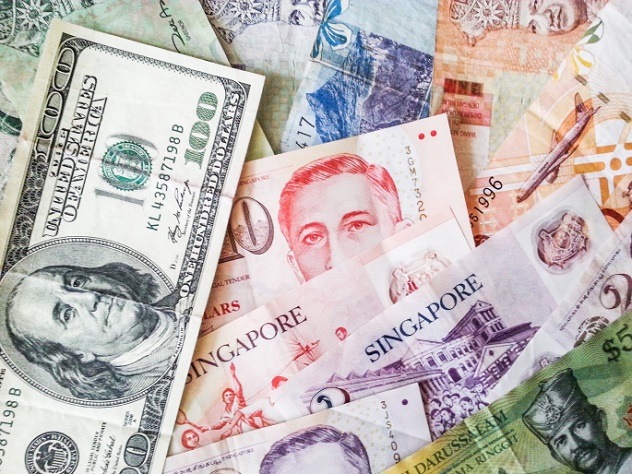
Even as a simple financier, Nicholas Deak was quite a character. An exiled Transylvanian aristocrat, he joined the US military during World War II and soon joined the Office of Strategic Services (OSS), the forerunner of the CIA. In that capacity, he planned attacks on Romanian oil fields and trained guerrillas in Burma, where he accepted the Japanese commander’s samurai sword at the end of the war.
In 1947, he started a flower business in Hawaii, which soon grew into a powerhouse in the world of finance. Deak and Co. was soon the largest precious metals and foreign exchange trader in the world. (The precious metal branch is now known as Goldline, while the rest of the business became the foreign exchange branch of Thomas Cook.) A staunch libertarian, Deak regularly appeared alongside speakers like Ron Paul and Alan Greenspan. As president of the OSS veterans organization, he was a close friend of James Jesus Angleton and future CIA director Bill Casey.
But in reality, Deak had never quite retired from espionage. His company’s remarkable growth was actually funded by the CIA, which needed an untraceable way to move cash around the world. A foreign exchange company was perfect, and Deak didn’t disappoint, funneling untraceable foreign currency to secret operations around the world. In 1953, he smuggled $1 million into Iran to fund the overthrow of Prime Minister Mohammad Mossadegh, and later carried out similar operations in Guatemala and the Congo. It’s said he even warned the CIA that the Chinese were planning their 1962 invasion of India when they ordered huge sums of Indian currency through his Hong Kong office.
One example of how Deak’s firm operated came during the Lockheed bribery scandal, in which the defense contractor bribed Japanese politicians to favor their planes for the state-run airline and other government contracts. Lockheed enlisted Deak to smuggle millions of dollars to a Yakuza don (and war criminal) named Yoshio Kodama, who distributed it within Japan. Deak had the money smuggled into the country in orange crates by a defrocked priest. When the scandal broke, the Japanese prime minister was arrested and a deranged male porn star flew a plane into Kodama’s house as revenge for staining Japan’s honor. Deak survived unscathed.
But his bulletproof reputation disintegrated in the 1980s, when the Justice Department accused him of laundering millions of dollars for the Colombian cartels, at which point the CIA unceremoniously dumped him. A run on his banking operations wiped out most of Deak’s cash reserves—and infuriated everyone from the cartels to the Macau triads, who felt he had lost their money. Shortly after declaring bankruptcy, Deak was shot dead in his plush Wall Street office by a homeless woman named Lois Lang.
Officially, Lang was said to have acted alone, prompted by a deranged belief that Deak owed her money. Yet many have had trouble accepting that explanation, with the Canadian economist R.T. Naylor acidly observing that Deak was “gunned down by one of those lone nuts that do for US politics what heart attacks do in Italian jails.” More seriously, Arkadi Kuhlmann, who followed Deak as CEO of Deak and Co., says his investigators found evidence that Lang met with two Argentinean mobsters in Miami, shortly before she bought a gun and a bus ticket to New York. When Kuhlmann went to Macau after Deak’s death, he found the offices empty and strewn with papers. In a desk drawer, he found a picture of Deak bleeding to death on his office floor. The picture, apparently taken by Lang, had never been released by the authorities.
9Why Did James Angleton Want Mary Meyer’s Diary?
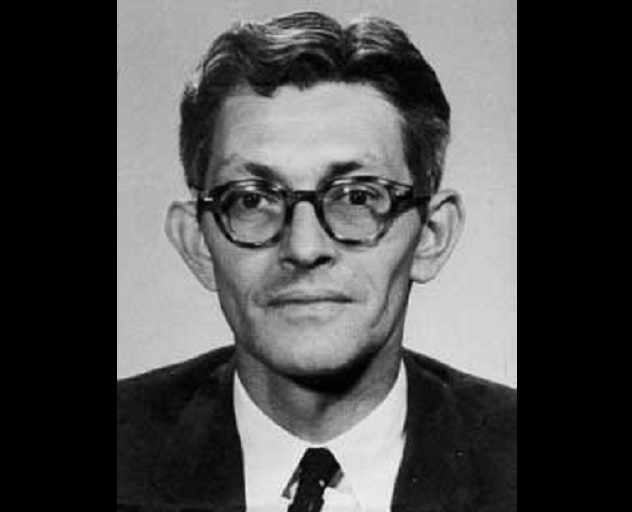
In October 1964, two men were changing a flat tire near the C&O Canal in Washington, DC, when they heard a cry for help and two gunshots. When the police arrived, they found the body of Mary Pinchot Meyer lying on a towpath, shot twice at close range. Mary Meyer was an artist and the ex-wife of Cord Meyer, a senior CIA official who had overseen Operation Mockingbird, which sought to influence the American media in favor of the CIA. A prominent figure on the Washington social scene, Mary Meyer had also carried on a lengthy affair with John F. Kennedy before his death.
The police arrested an African-American man named Ray Crump, who was found nearby, soaked and with a bleeding hand. Crump acted suspiciously and changed his story a few times. He eventually said he had been fishing, but his fishing rod was still in his house. But no hard evidence could be found and a jury acquitted him. The mysterious killing has subsequently become a favorite topic among conspiracy theorists.
Meanwhile, Mary Meyer’s brother-in-law, future Washington Post editor Ben Bradlee, got a strange call from one of her friends, the sculptor Anne Truitt. According to Truitt, Meyer had asked her to destroy her diary in the event of her sudden death. Since Truitt was in Tokyo, she asked Bradlee to look for it. But when he arrived at Mary’s locked house, he found James Jesus Angleton, the legendary CIA counterintelligence head, searching the living room for the diary, which was nowhere to be found. Bradlee next decided to try Mary’s studio, only to find Angleton had beaten him there and was in the process of picking the lock. Embarrassed, Angleton left and Bradlee found the diary, which revealed Mary’s affair with JFK. Bradlee subsequently agreed to hand the diary over to Angleton on the condition that he destroy it. But he didn’t—Bradlee’s wife discovered it was still in his possession over a decade later. On her insistence, the diary was burned.
8Did The CIA Have Ties To Klaus Barbie?
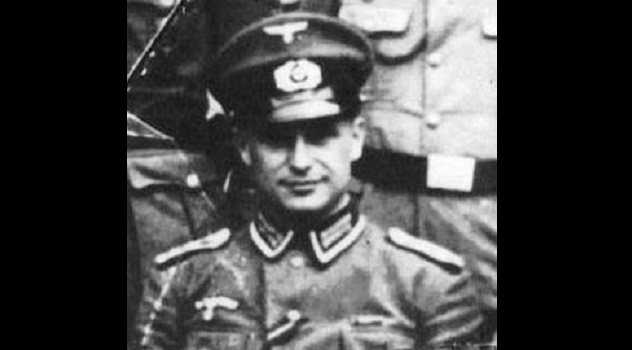
As “the Butcher of Lyon,” Klaus Barbie was one of the most notorious members of the Gestapo and a committed Nazi. Yet after the war, US military intelligence recruited him as an agent, sheltered him from the French authorities, and eventually helped him escape to South America. That’s not a conspiracy theory—the US government publicly confirmed as much in 1983, following an investigation by the Justice Department.
The real mystery is what happened next. In South America, Barbie became an influential figure in right-wing circles, a drug trafficker, and a key player in the brutal “Cocaine Coup” that briefly overthrew the government of Bolivia in 1980. He was extradited to France in 1983. Did US intelligence services, including the CIA, maintain a connection with Barbie during his time in Bolivia?
They certainly considered it. In its 1983 report, the Justice Department cited CIA documents which discussed hiring Barbie to help hunt down Che Guevara, who was leading a communist insurgency in Bolivia at the time. Officially, the CIA decided not to follow through with the plan, wary of French plans to have Barbie extradited to stand trial. However, there are some indications that the agency might have sought Barbie’s help off the record. Kevin MacDonald’s acclaimed 2007 documentary My Enemy’s Enemy explored the idea, with a close friend of Barbie’s insisting he had met with the senior American officer planning counter-guerrilla operations in Bolivia.
The evidence is inconclusive, although it’s worth noting that the CIA was in strong support of Bolivian president Rene Barrientos, who did have ties to Barbie. At the moment, Barbie’s only certain ties to Western intelligence after 1951 came in 1966, when he was briefly employed by West Germany’s BND spy agency.
7Was Yuri Nosenko A Real Defector?
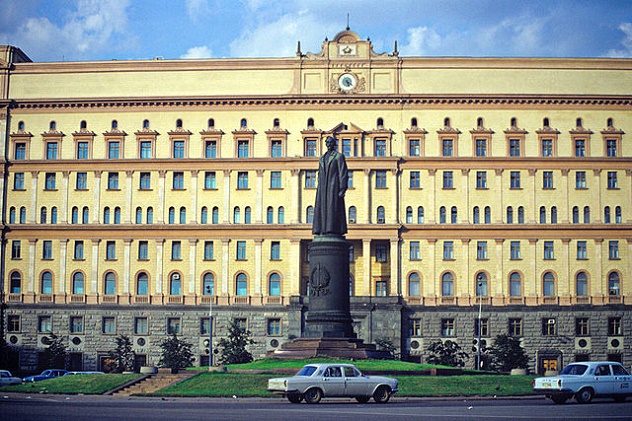
In 1962, a KGB officer named Yuri Nosenko contacted CIA agents in Geneva and informed them that a prostitute had stolen $200 from him. Because the KGB strictly monitored his expenses, he was desperate to get the money back, offering to sell the CIA a KGB manual in return for the cash. The agency accepted and asked Nosenko to keep in touch, promising him $25,000 if he could expose any Russian spies. Nosenko agreed, but a few weeks after the Kennedy assassination, he told his American contacts that the KGB was onto him and asked to defect. He was flown to Washington in 1964.
But CIA operatives soon grew suspicious of Nosenko. He had insisted on being extracted from Switzerland right away, since a cable from Moscow had arrived ordering his return. But the US was secretly monitoring the embassy and said no cable had arrived. In 1962, Nosenko had said he didn’t want to defect because of his wife and child. In 1964, he never mentioned them. He first said he was a colonel, then changed his mind and said he was a captain.
Before he shot Kennedy, Lee Harvey Oswald had briefly defected to the Soviet Union, living there for just over two years. Nosenko said that he had overseen the Soviet file on Oswald, explaining that the KGB considered Oswald deranged and had never attempted to recruit him. Many in the CIA found that suspicious. Oswald’s time in Russia had prompted speculation that he was a Russian agent. How convenient for his KGB case worker to defect just weeks later and reassure the Americans that the Soviets had nothing to do with the assassination.
Nosenko’s case soon caught the attention of James Jesus Angleton, the notorious CIA counterintelligence chief. Angleton had been very taken by a previous KGB defector named Anatoly Golitsyn, who claimed that the Soviets had infiltrated moles at the very highest levels of Western intelligence agencies. He also said that the KGB would send false defectors to discredit him. When Nosenko contradicted Golitsyn, Angleton was convinced. On his orders, Nosenko was imprisoned for three years and subjected to increasingly harsh interrogation techniques. Angleton also began tearing the CIA apart in search of Golitsyn’s moles.
The situation was intolerable and Angleton was forced out of the CIA in 1975. Wracked by paranoia, some of Angleton’s supporters began spreading rumors that CIA director William Colby had been the mole all along. Meanwhile, Golitsyn continued to push increasingly bizarre conspiracy theories, including the idea that the fall of the Soviet Union was an elaborate communist deception. Nosenko, who repeatedly passed polygraph tests, was released and vindicated. But while nobody believes Golitsyn anymore, the question of whether Nosenko was a real defector or not persists, with some, including the CIA agent who arranged his defection, insisting that the details just don’t add up.
6Did The Agency Target John Watkins?

In 1964, Canada’s former ambassador to the Soviet Union, John Watkins, died in a Montreal hotel room where he was being interrogated by the Royal Canadian Mounted Police (RCMP). It had long been rumored that the Soviets had photographed a senior Canadian diplomat during a homosexual encounter in Moscow. When Yuri Nosenko defected, he confirmed that the diplomat was Watkins. The CIA alerted the RCMP, who hauled Watkins in for questioning. After Watkins died, the RCMP covered it up. It was reported that Watkins had suffered a heart attack during a dinner.
The truth emerged in 1981, when the British journalist Chapman Pincher reported on it. Then, Canadian novelist Ian Adams unearthed files proving the RCMP had kept the circumstances of the death from the coroner. The cover-up rightly caused an uproar in Canada.
But the case wasn’t quite as bad as it’s often made out to be. A senior diplomat dying during an interrogation sounds very dark, but Watkins actually had a heart condition and could have passed away at any time. He cooperated fully with the investigation, which was friendly and polite, and the RCMP was inclined to believe that the ambassador did not give in to Soviet blackmail. Watkins and the RCMP officers watched Canadian football together and regularly dined with each other in the hotel. The investigation even took a 10-day break, during which Watkins visited his cousins. Eager to clear his name, he ignored a doctor’s advice to check into the hospital immediately.
But questions have been raised about the CIA’s role in the affair. Watkins was a good friend of Canadian prime minister Lester Pearson, who an official CIA report called “disturbing from a US point of view,” and it has been suggested that the CIA pushed the RCMP to interrogate him in the hopes of discrediting Pearson. According to Ian Adams, who helped expose the affair, James Jesus Angleton suspected that Watkins was a Soviet mole and wanted to extract a confession from him in order to stage “a de facto coup” that would bring down the Pearson government. Certainly, the CIA alerted the RCMP to Nosenko’s claims, but what other pressure they brought to bear remains unclear.
5Did The US Rat Out Nelson Mandela?
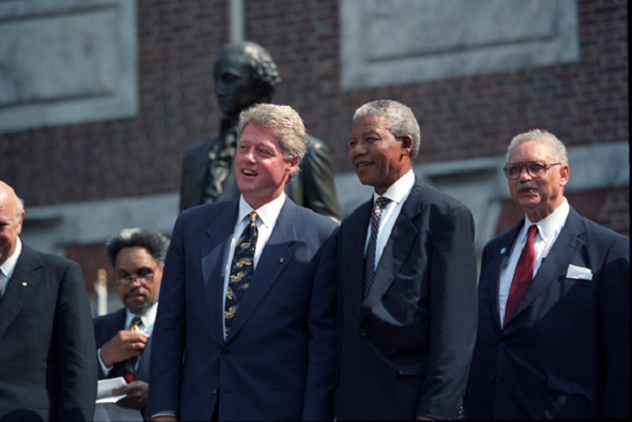
In 1962, South African police arrested a revolutionary named Nelson Mandela, who was one of the most prominent figures in the anti-apartheid African National Congress (ANC). He would famously remain in jail for most of the next three decades, embracing nonviolence and becoming an international icon in the process. Which might be awkward for the CIA, since it’s long been rumored that they tipped off the South Africans about where to find Mandela, who was in disguise as a chauffeur when he was arrested.
At the time, the US government halfheartedly supported the apartheid regime as a bulwark against communism in the region. (The ANC’s links to the South African Communist Party didn’t help matters.) In 1990, it was reported that the CIA’s Pretoria station chief, Paul Eckel, had told a friend that the agency “turned Mandela over to the South African Security Branch. We gave them every detail, what he would be wearing, the time of day, just where he would be. They picked him up. It was one of our greatest coups.” Retired South African intelligence officer Gerard Ludi claims that the tip was delivered by Millard Shirley, a CIA officer with a long career in Africa, “because it was in America’s interest to have Mr. Mandela out of the way.” Shirley later helped disrupt the anti-Apartheid movement in the late ‘80s, although it’s not clear that he was formally working for the CIA at the time.
Although the rumors have been persistent, there is currently no hard evidence that the CIA informed on Mandela. Typically, Mandela preferred to let the matter go, later saying “let’s forget about that, whether it is true or not.” One way or another, the mystery should hopefully be resolved soon, since activist Ryan Shapiro is currently suing the CIA under the Freedom of Information Act, demanding that they release their records on Mandela.
4The Chesapeake Bay Deaths

A CIA agent since 1953, John A. Paisley held a number of senior positions in the agency during the 1970s. Among other things, he was CIA liaison to the White House Special Investigations Unit, which was set up to investigate the Pentagon Papers leak and gradually grew into a key player in the Watergate scandal. As a liberal close to Director William Colby, Paisley came under suspicion from hardliners who believed the Soviets had moles in the CIA. The evidence wasn’t exactly compelling, with CIA officer David Sullivan explaining “I never liked him. There was something that wasn’t right. He seemed like some kind of burned-out old fart who had a beard and looked like a queer. I am convinced he was the mole.”
In September 1978, Paisley’s boat was found moored in Chesapeake Bay. His body was pulled from the water a short distance away, weighed down with two diving belts. He had been shot above the left ear. The death was ruled a suicide, although some have questioned why the right-handed Paisley would shoot himself in the left side of his head. There was no sign of blood on the boat, and the weapon was never found. Oddly, Paisley’s estranged wife had reservations about whether the body was really his, prompting widespread and faintly ludicrous speculation that the real Paisley was a Soviet agent who had been whisked to safety aboard a Russian submarine.
The case was largely forgotten until 18 years later, when Paisley’s old mentor, CIA director William Colby, also vanished while alone in a boat on Chesapeake Bay. His body was missing for days, before a policeman spotted something floating near the shore. He was ruled to have died from a combination of drowning and hypothermia caused by exposure. Since Colby was an experienced sailor, his disappearance prompted a revival of the Paisley conspiracy theories and the rumors of moles being spirited away on Russian subs. For his part, Colby was always dismissive of the rumors. In 1978, he told a journalist “the latest story about me is that I’m the mole. You know, on the side of the Russians. [ . . . ] I’ve had lots of bum raps. I shake them off.”
3Where Is Mike Hand?

As a Green Beret, Mike Hand won a Purple Heart and served extensively in Vietnam, including with the CIA’s Phoenix program, which carried out targeted killings. (The CIA adamantly denies they were “assassinations.”) He also worked extensively training mercenaries from the Meo people, who were also large-scale opium growers.
After the war, Hand moved to Australia and teamed up with local businessman Frank Nugan to found the Nugan Hand Bank. Despite having seed capital of just $1,000, Nugan Hand soon grew into one of the largest banks in Australia, with more than $1 billion to invest each year. The bank was notable for its close links to the US military and intelligence communities. Retired admiral Earl Yates served as president, while at least three former generals held senior posts. Former CIA director William Colby served as legal counsel, while the head of the Thailand branch was the former CIA station chief in the country. But in reality, Nugan Hand was a giant criminal enterprise, set up to launder profits from the Asian heroin trade.
The bank dabbled in other areas—selling guns to African rebels and Iran, moving stolen money for Filipino dictator Ferdinand Marcos—but the bulk of its operations involved drugs. Oddly, the bank never ran afoul of the US authorities, even though its activities should have been obvious. The aforementioned Thailand branch even maintained an office in Chiang Mai, in the heart of the “Golden Triangle” heroin trade, which shared a building with the local DEA office. The DEA never investigated Nugan Hand.
Along with the large number of military personnel working for it, the lack of US interest in the bank has led to reasonably well-substantiated speculation that Nugan Hand was a front for the CIA. The agency officially denies this, but as an Australian official told writer Jonathan Kwitny: “What you’re left with is saying, here are all these patriots who have served their country faithfully for years, suddenly saying, ‘Let’s all become criminals. Let’s forget our war service, our heroism, and go out and commit crimes against the very country we’ve been working for.’ ”
Things came crumbling down after Frank Nugan apparently shot himself with a high-powered rifle while in his car. Police called to the scene found a list of Australian politicians with large sums of money listed next to each name. In the aftermath, Admiral Yates flew out to Australia to oversee a “team of former US military operatives” who were seen “ransacking” Nugan’s house and office. Hand ordered his employees to shred incriminating files, threatening anyone who protested that “terrible things would happen; your wives would be cut up and returned to you in bits and pieces.” The bank collapsed shortly afterward, costing many depositors their life savings. Earl Yates and the bank’s other American officers refused to return to Australia to testify.
And what about Michael Hand? He was last seen boarding a flight to Fiji, wearing a false beard and using a fake passport. That was 1980. In 1991, an Australian newspaper reported that he was living in Washington, but the Australian government declined to take further action. He has not been seen since.
2Did The CIA Help Bring Down The Australian Government?
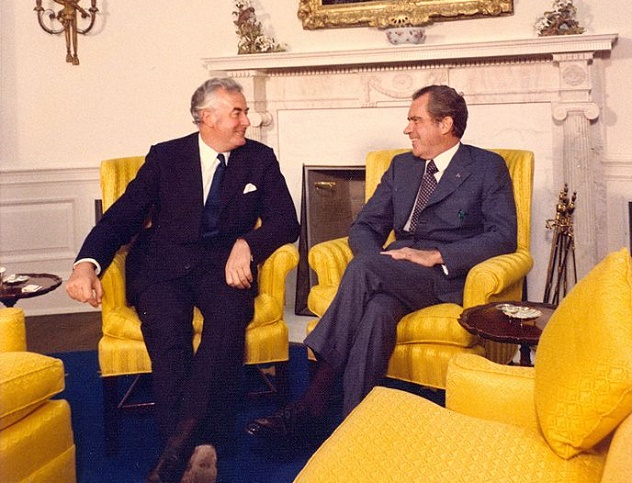
In 1975, Australia was in crisis, with opposition Liberal senators refusing to approve the budget of Labor prime minister Gough Whitlam (pictured above with Richard Nixon), which would effectively shut down the government. In response, Australian governor-general John Kerr dismissed Whitlam from office and appointed a Liberal prime minister, who won the following election. The governor-general is the Queen’s representative in Australia and traditionally does not interfere in politics. So Kerr’s decision to remove an elected prime minister caused huge controversy, to the point that Kerr eventually had to leave the country.
Ever since Whitlam’s dismissal, questions have been asked over the role of the CIA in the downfall of his government. Whitlam had pulled Australian troops out of Vietnam and condemned the American bombing campaigns there. Shocked to learn that Australian intelligence had helped to undermine the left-wing government of Salvador Allende in Chile, Whitlam refused to allow his staff to be “vetted or harassed” by the Australian Security and Intelligence Organization (ASIO). In 1974, he instructed ASIO to cut all ties with the CIA, an order that ASIO secretly ignored.
In 1974, Whitlam said that he was opposed to foreign military installations in Australia, including the huge CIA facility at Pine Gap. According to CIA agent Victor Marchetti, the “threat to close Pine Gap caused apoplexy in the White House.” CIA cables called Whitlam a “security threat.” One of Whitlam’s ministers claimed MI6 was bugging Australian cabinet meetings and his deputy prime minister had to resign in a scandal that may have been partially engineered by US intelligence.
Meanwhile, John Kerr was known to be a member of the Australian Association for Cultural Freedom, which a congressional investigation later revealed to be a CIA front group. CIA contractor Christopher Boyce, who became a Soviet spy in the mid-1970s, said he turned against the CIA after seeing cables indicating the agency was acting against the Australian government. According to Boyce, the cables referred to the governor-general as “our man Kerr.”
It’s certainly unlikely that the CIA alone was responsible for Whitlam’s downfall, but serious questions remain over whether the agency agitated against the elected leader of an American ally. Regardless, the Whitlam case and Nugan Hand damaged the agency’s reputation in Australia to the point that it had to issue a public statement: “The CIA has not engaged in operations against the Australian government, has no ties to Nugan Hand, and does not engage in drug trafficking.”
1What’s In The Missing Family Jewel?
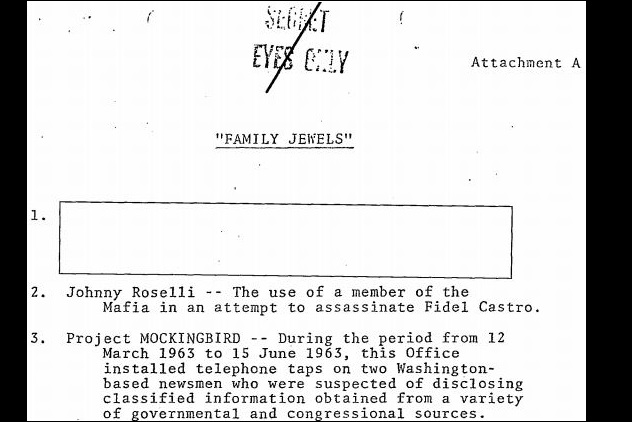
In 1973, director James Schlessinger ordered deputy director William Colby to compile a record of any CIA activities since 1959 that might have violated the law or the agency’s charter. Colby put together a loose-leaf package of around 700 papers, which came to be known as “the Family Jewels.” Examples of the Jewels include Yuri Nosenko’s three-year detention, domestic surveillance operations carried out by CIA agents, and the agency’s famous attempts to kill Castro and other foreign leaders. Many of these secrets trickled out over the years or were exposed by congressional investigations like the Church Committee. But the full document was only released in 2007, providing a fascinating insight into the CIA’s most scandalous operations.
Almost all of them anyway. Even in 2007, one prominent Jewel was redacted. A memo from Howard Osborn, CIA director of security, lists the Jewels involving his department. The second Jewel on the list describes how the CIA recruited the Mafia to help assassinate Fidel Castro. But the first item on the list is blacked out. So is a later section describing the redacted operation in more detail. So what’s the missing Jewel? It remains unclear, but it must be good. As National Security Archive director Thomas Blanton told The Nation: “The No. 1 jewel of the CIA’s Office of Security is probably a pretty good one—especially since the second jewel in this list is the Roselli/Castro assassination program.”
